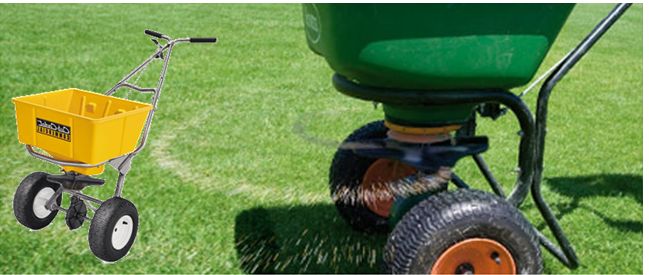Rotary Spreader Calibration links:

Rotary Spreader
GOOD NEWS About Rotary Spreaders
Rotary spreaders save time. They dispense the product over a wider swath, per pass than drop spreaders, allowing quicker treatment of the total area.
Low maintenance is required. Most rotary spreaders are manufactured primarily, from plastic parts, which eliminate rust problems. They are easy to clean with a hose after each use. Be sure to lubricate any metal parts with light oil, after cleaning.
Rotary spreaders are compatible with many products. They permit the use of many different products, including some that have large granules.
BAD NEWS About Rotary Spreaders
Uneven distribution is a problem with combination products. Small, light particles tend to fall to the ground close to the spreader, while larger, heavier ones are thrown farther out. Products that contain a mixture of large fertilizer granules and small pesticide granules, for instance, may be difficult to disperse evenly.
Uniform coverage may be more difficult to achieve than with drop spreaders. Proper overlap is essential. It is important to overlap the right amount on each pass and to do so consistently.
Off-target placement can be a problem. When operating a rotary spreader, you must prevent the product from being thrown onto areas where it should not be applied: sidewalks, driveways, patios, play areas, sensitive landscape plants, gardens, etc. In addition to managing the swath pattern, you must be aware of crosswinds that could possibly blow granules off-target.
Compiled by Wayne Buhler, PhD.
